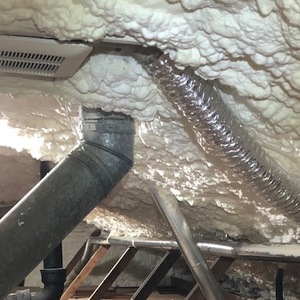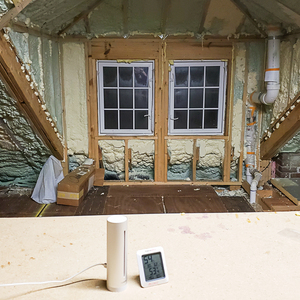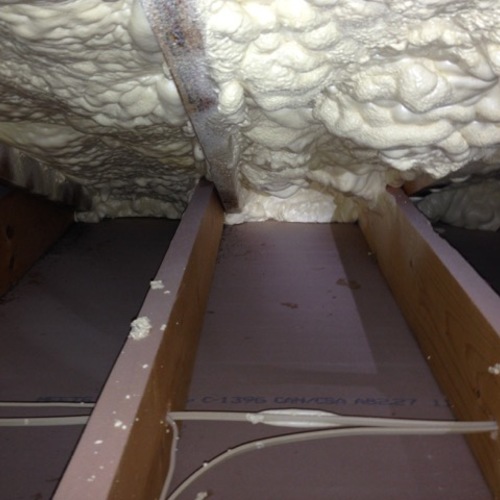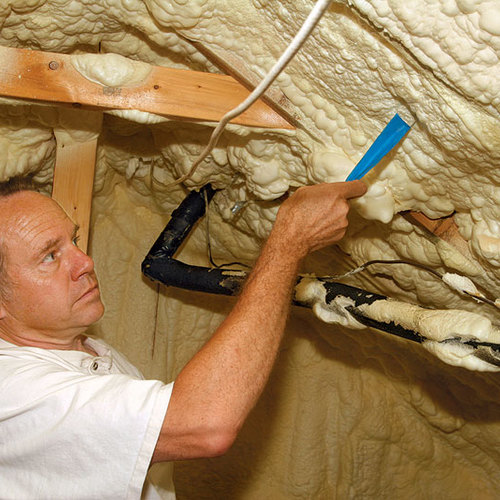
Brianandson’s Michigan home has an unconditioned attic with what he suspects is a potential moisture problem. The 900-sq.-ft. attic is equipped with a fan connected to both humidity and temperature sensors, but even with the fan running non-stop, the relative humidity never drops below 69%.
His major concern is that with a relative humidity that high, mold is sure to follow.
In addition to the attic fan, there are six static vents, Brianandson writes in this Q&A post. “I have no soffits, but I do have vents on the lower ends of the roof. It seems like there is good air movement.”
The low-slope roof, pitched at 3:12 or 4:12, has only about 3 ft. of clearance at the peak, making the low attic a difficult place to work. Brianandson has managed to get about 16 in. of insulation onto the attic floor, where there is enough headroom, but at the eaves there is only about 6 in. of clearance.
“I don’t think I can pack insulation because it will be hitting the bottom of the roof sheathing,” he adds. “It’s a real difficult roof and attic being such tight space, and if I get mold it will be so difficult [to get rid of]. Any advice you can give me to help lower the attic’s relative humidity level in the winter temps and be safe from mold will greatly be appreciated.”
That’s where we start this Q&A Spotlight.
Attic fan is drawing moisture upward
The exhaust fan in the attic is drawing moisture from the house into the attic, says John Clark. But because the attic also has passive vents, it’s difficult to guess how much moisture the fan is actually pulling in.
“The primary issue is that moist interior air is getting into…
Weekly Newsletter
Get building science and energy efficiency advice, plus special offers, in your inbox.

This article is only available to GBA Prime Members
Sign up for a free trial and get instant access to this article as well as GBA’s complete library of premium articles and construction details.
Start Free TrialAlready a member? Log in















One Comment
“[Deleted]”
Log in or become a member to post a comment.
Sign up Log in